Introduction
Kailash Parvat, also known as Mount Kailash, is a majestic peak in the Himalayas that is revered by millions of people from different faiths. Hindus believe that it is the abode of Lord Shiva and Goddess Parvati, Buddhists regard it as the center of the universe and the seat of Buddha Demchok, Jains consider it as the place where the first Tirthankara Rishabhanatha attained enlightenment, and Bon followers view it as the sacred mountain of Zhang Zhung, their ancient homeland.
In this blog post, we will explore the history, significance, spiritual experiences, travel guide, nearby attractions, accommodation tips and frequently asked questions about Kailash Parvat. Whether you are planning to visit this holy site or just curious to learn more about it, this guide will help you understand why Kailash Parvat is one of the most fascinating and mysterious places on earth.
Table of Contents
History of Kailash Parvat
Kailash Parvat is estimated to be 30 million years old, making it one of the oldest mountains in the world. It is part of the Trans-Himalayan range that stretches from Kashmir to Bhutan. It has a height of 6,638 meters (21,778 feet) and a circumference of 52 kilometers (32 miles). It is surrounded by four major rivers: the Indus, the Brahmaputra, the Sutlej and the Karnali.
The first mention of Kailash Parvat in Hindu scriptures dates back to the Rig Veda, where it is called Meru or Sumeru, the axis mundi or the cosmic pillar that connects heaven and earth. Later texts such as the Puranas, the Ramayana and the Mahabharata describe Kailash Parvat as the residence of Lord Shiva and Goddess Parvati, where they perform their cosmic dance and meditate for the welfare of all beings. Many sages, saints and gods are said to have visited or lived on Kailash Parvat, such as Rishabhanatha, Bharata, Arjuna, Narada, Nandi and Ganesha.
In Buddhism, Kailash Parvat is known as Kang Rinpoche or Gang Tise in Tibetan, meaning “Precious Snow Mountain”. It is considered to be the mandala or representation of Mount Meru and its surrounding continents. It is also associated with Buddha Demchok or Chakrasamvara, who represents supreme bliss and compassion. According to legend, Buddha Demchok manifested on Kailash Parvat along with his consort Dorje Phagmo or Vajravarahi to subdue a group of demons who were disturbing the Dharma. He then taught his teachings to his disciples on Kailash Parvat.
In Jainism, Kailash Parvat is known as Ashtapada or Astapada in Sanskrit, meaning “Eight Steps”. It is believed to be the place where Rishabhanatha or Adinatha, the first Tirthankara or enlightened teacher of Jainism, attained nirvana or liberation from the cycle of birth and death. He was also born on Kailash Parvat in his previous life as King Nabhi. His son Bharata was the first chakravartin or universal emperor who conquered all lands and built 72 temples of gemstones on Kailash Parvat.
In Bon religion, which predates Buddhism in Tibet, Kailash Parvat is known as Yungdrung Gutseg or “Nine-Storey Swastika Mountain”. It is regarded as the soul mountain or sacred mountain of Zhang Zhung, an ancient kingdom that once ruled over western Tibet. It is also connected with Tonpa Shenrab Miwoche or Shenrab Miwo, the founder and teacher of Bon religion. He was born in a land called Olmo Lungring near Kailash Parvat and later visited it several times to spread his teachings.
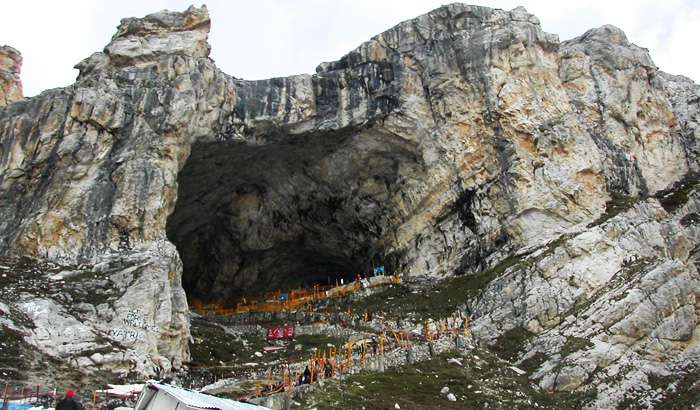
How to Reach Kailash Parvat
Kailash Parvat, also known as Mount Kailash, is a sacred mountain in the Himalayas that is revered by Hindus, Buddhists, Jains and Bonpos. It is believed to be the abode of Lord Shiva, the supreme god of Hinduism, and the source of four major rivers: the Indus, the Brahmaputra, the Karnali and the Sutlej. Many pilgrims aspire to visit Kailash Parvat and perform a ritual circumambulation of the mountain, which is said to bring spiritual benefits and cleanse one’s sins.
However, reaching Kailash Parvat is not an easy task. The mountain is located in a remote area of Tibet, near the border with India and Nepal. The altitude of the mountain is over 6,600 meters (21,600 feet), and the weather is harsh and unpredictable. The journey requires a lot of planning, preparation and perseverance.
Here are some steps to help you reach Kailash Parvat:
- Obtain a valid passport and visa for China. You will need to apply for a Chinese visa from your home country, and then get a Tibet Travel Permit from a travel agency in China. You will also need a special permit for visiting Kailash Parvat, which can only be obtained through an authorized tour operator.
- Book a flight to Kathmandu, Nepal. This is the most convenient gateway to Tibet for international travelers. From Kathmandu, you can either fly or drive to Lhasa, the capital of Tibet. The flight takes about an hour and a half, while the drive takes about three days.
- Acclimatize to the high altitude in Lhasa. You will need to spend at least two or three days in Lhasa to adjust to the thin air and avoid altitude sickness. You can visit some of the famous attractions in Lhasa, such as the Potala Palace, the Jokhang Temple and the Barkhor Street.
- Join a guided tour to Kailash Parvat. You cannot travel independently in Tibet, so you will need to join a group tour with a licensed guide and driver. The tour will take you from Lhasa to Kailash Parvat via several scenic stops along the way, such as Lake Yamdrok, Gyantse, Shigatse and Saga. The whole trip can take about 15 days.
- Prepare for the kora around Kailash Parvat. The kora is the ritual circumambulation of the mountain that pilgrims perform on foot. It covers a distance of about 52 kilometers (32 miles) and takes about three days to complete. You will need to bring warm clothes, sturdy shoes, sleeping bags, tents, food and water for the trek. You will also need to hire porters or yaks to carry your luggage.
- Complete the kora with faith and devotion. The kora starts from Darchen, a small town at the base of Kailash Parvat. The first day of the trek is relatively easy, as you follow a flat valley along the western face of the mountain. The second day is the most challenging, as you cross the Dolma La Pass at 5,630 meters (18,470 feet), the highest point of the kora. The third day is downhill all the way, as you return to Darchen via the eastern face of the mountain.
- Celebrate your achievement and return to Kathmandu. After completing the kora, you can rest and relax in Darchen or visit Lake Manasarovar, another holy site near Kailash Parvat. Then you will retrace your steps back to Lhasa and fly or drive to Kathmandu.
Reaching Kailash Parvat is a once-in-a-lifetime experience that will enrich your soul and test your endurance. If you are interested in this adventure, make sure you plan ahead and follow these steps carefully.

Significance of Kailash Parvat
Kailash Parvat is not only a physical mountain but also a spiritual symbol that represents different aspects of reality for different faiths. For Hindus, it symbolizes Shiva’s power, wisdom and detachment from worldly illusions. For Buddhists, it symbolizes Buddha’s enlightenment, compassion and emptiness of inherent existence. For Jains, it symbolizes Rishabhanatha’s liberation, non-violence and respect for all life forms. For Bon followers, it symbolizes Shenrab Miwo’s teachings, harmony and balance of natural forces.
Kailash Parvat is also a pilgrimage destination that attracts thousands of devotees every year who wish to pay homage to their respective deities and receive their blessings. The most common way of doing so is by performing a kora or circumambulation around the mountain, which is considered to be an act of devotion, purification and merit. A kora can be done on foot, by prostrating, by riding a yak or a horse, or by driving a vehicle. The standard kora takes about three days to complete and covers a distance of 52 kilometers (32 miles). It involves crossing several passes, streams and valleys, and offers stunning views of the mountain and its surroundings.
Another way of honoring Kailash Parvat is by visiting the nearby Lake Mansarovar, which is considered to be the source of four sacred rivers: the Indus, the Brahmaputra, the Sutlej and the Karnali. Lake Mansarovar is also believed to be the abode of various gods and goddesses, such as Brahma, Vishnu, Lakshmi, Saraswati and Indra. It has a circumference of 88 kilometers (55 miles) and a depth of 90 meters (300 feet). It is said that bathing in its waters or drinking from them can cleanse one’s sins and grant one’s wishes.
Spiritual Experiences on Kailash Parvat
Many pilgrims and travelers who have visited Kailash Parvat have reported having various spiritual experiences that have changed their lives. Some of these experiences include:
Feeling a strong connection with the divine presence on the mountain and receiving guidance, protection and healing from it.
Having visions, dreams or encounters with deities, angels, spirits or ancestors who reside on or near the mountain.
Experiencing a sense of peace, joy, love and bliss that transcends ordinary emotions and fills one’s heart with gratitude and devotion.
– Gaining insights, wisdom and clarity about one’s purpose, destiny and karma that helps one to overcome challenges and obstacles in life.
Witnessing miracles, signs and wonders that confirm one’s faith and inspire one to share it with others.
Feeling a transformation in one’s body, mind and soul that enhances one’s health, happiness and harmony.
Of course, not everyone who visits Kailash Parvat will have the same or any spiritual experience. It depends on one’s intention, preparation, openness and receptivity. However, it is undeniable that Kailash Parvat has a special energy and vibration that can awaken one’s inner potential and awareness.
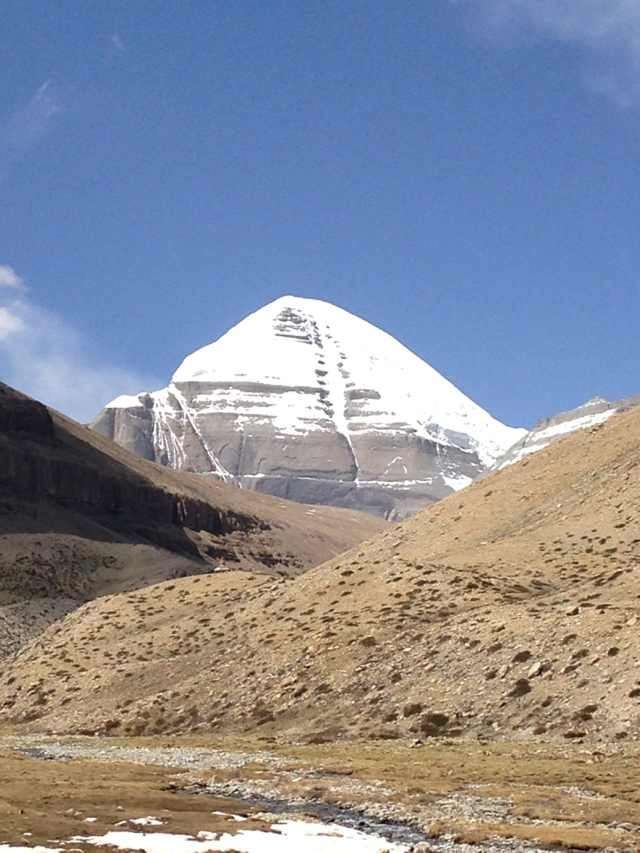
Travel Guide to Kailash Parvat
If you are interested in visiting Kailash Parvat, here are some practical tips and information that you need to know:
The best time to visit Kailash Parvat is from May to October, when the weather is relatively mild and stable. Avoid going in winter, when the temperature can drop below -20°C (-4°F) and the roads can be blocked by snow.
The easiest way to reach Kailash Parvat is by flying to Kathmandu in Nepal and then taking a flight or a bus to Lhasa in Tibet. From there, you can join a tour group or hire a private vehicle to drive you to Darchen, the base camp for the kora around the mountain. Alternatively, you can also enter Tibet from India via Lipulekh Pass in Uttarakhand or Nathu La Pass in Sikkim. However, these routes are more challenging and require special permits from both countries.
The cost of visiting Kailash Parvat varies depending on your mode of transportation, accommodation, food and other expenses. Generally speaking, you can expect to spend around $2,000-$3,000 per person for a 15-day trip from Kathmandu to Kailash Parvat and back. This includes airfare, visa fees, tour fees, guide fees, entrance fees, tips and taxes. You may also need to pay extra for porter services, horse rental or vehicle rental if you choose to use them.
– The visa requirements for visiting Kailash Parvat depend on your nationality and your point of entry. If you are entering Tibet from Nepal, you will need a Chinese Group Visa issued by the Chinese Embassy in Kathmandu. This visa is valid for 15 or 30 days depending on your itinerary. You will also need a Tibet Travel Permit issued by the Tibet Tourism Bureau in Lhasa. This permit is arranged by your tour operator or travel agent in advance. If you are entering Tibet from India, you will need an Indian Passport with at least six months validity and two blank pages. You will also need a Chinese Visa issued by the Chinese Embassy in New Delhi or Kolkata. This visa is valid for three months with multiple entries. You will also need a Tibet Travel Permit issued by the Tibet Tourism Bureau in Lhasa.
Kailash Parvat is a sacred mountain in the Himalayas, revered by Hindus, Buddhists, Jains and Bonpos. Many pilgrims visit this holy site every year, but there are some questions that often arise about its significance, history and challenges. Here are some of the most frequently asked questions on Kailash Parvat.
Frequently asked questions
- What does Kailash Parvat mean?
Kailash Parvat means “crystal mountain” in Sanskrit. It is also known as Mount Kailash, Kangrinboqe or Gang Rinpoche in Tibetan, which means “precious jewel of snows”. - Why is Kailash Parvat important for different religions?
Kailash Parvat is believed to be the abode of Lord Shiva and his consort Parvati in Hinduism, the center of the world and the source of four major rivers in Buddhism, the place where Rishabhadeva attained liberation in Jainism, and the home of the founder of Bon religion, Tonpa Shenrab Miwoche. - How can one reach Kailash Parvat?
Kailash Parvat is located in the Ngari Prefecture of Tibet Autonomous Region in China. The nearest airport is Ali Kunsha Airport, which is about 200 km away from the mountain. From there, one can take a bus or a car to Darchen, the base camp for the Kailash Parvat pilgrimage. Alternatively, one can also travel from Kathmandu in Nepal to the border town of Zhangmu and then proceed to Darchen by road. - What are the challenges of visiting Kailash Parvat?
Kailash Parvat is situated at an altitude of 6,638 meters above sea level, which poses a risk of altitude sickness for visitors. The weather is also unpredictable and can change rapidly from sunny to snowy. The pilgrimage involves a 52 km circumambulation of the mountain, which takes about three days to complete. The terrain is rugged and steep, and requires physical stamina and mental determination. Moreover, there are strict regulations and permits required for entering Tibet and visiting Kailash Parvat, which may vary depending on the political situation.
Also Read
Kailash Temple: A Marvel of Indian Architecture and Spirituality
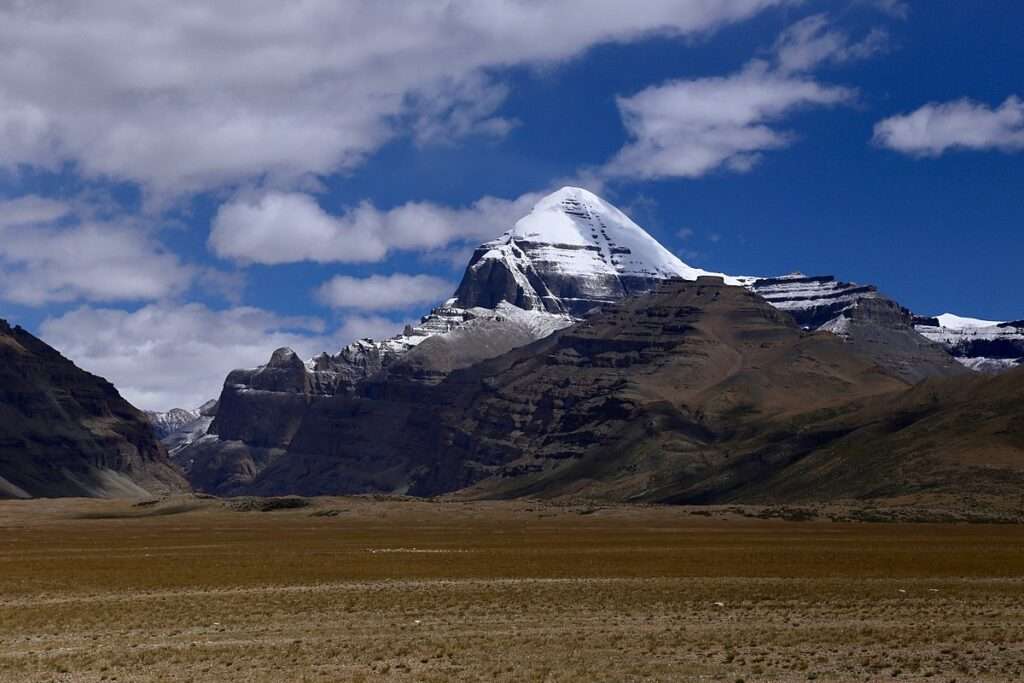
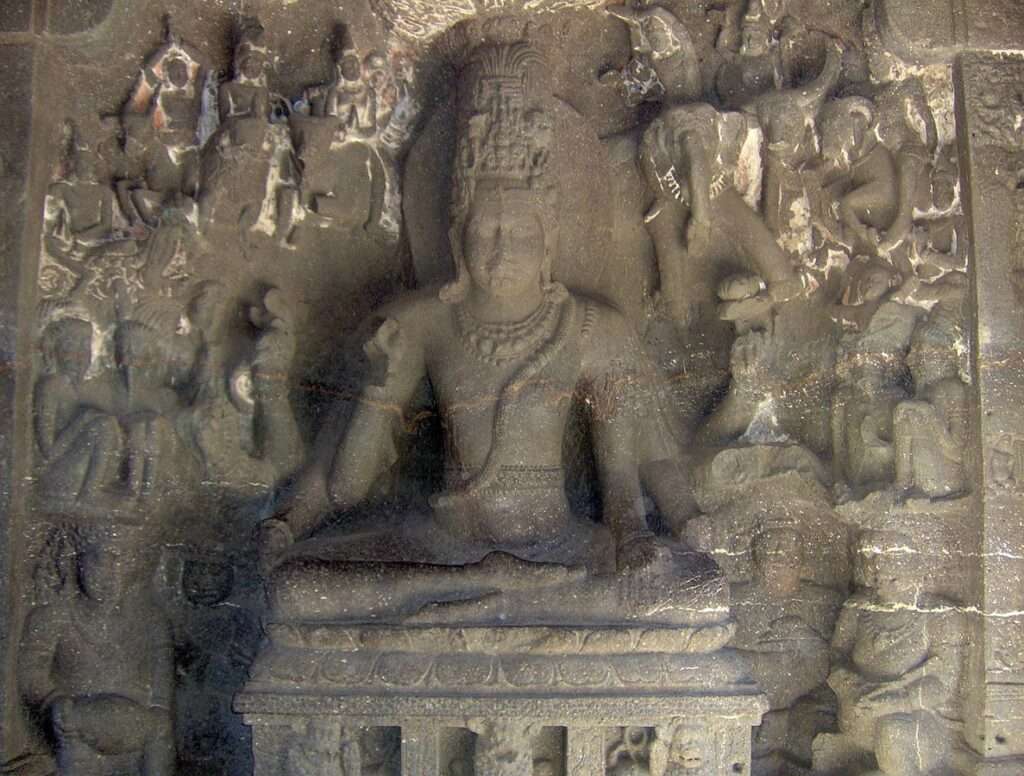
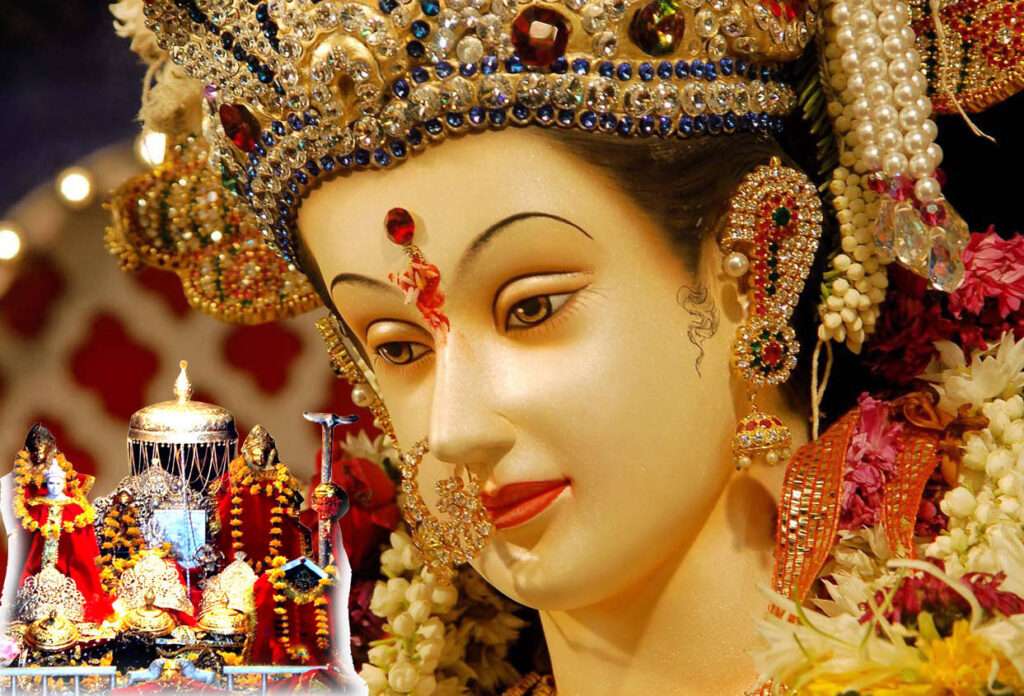
Pingback: Lotus Temple: A Symbol of Peace and Unity, Must Visit - vedmiracles